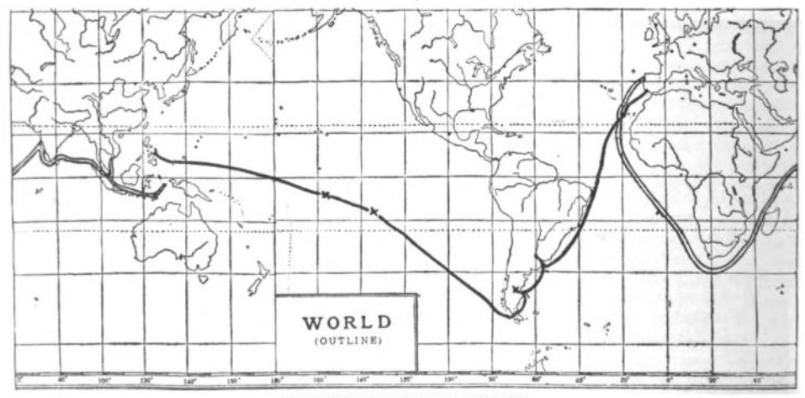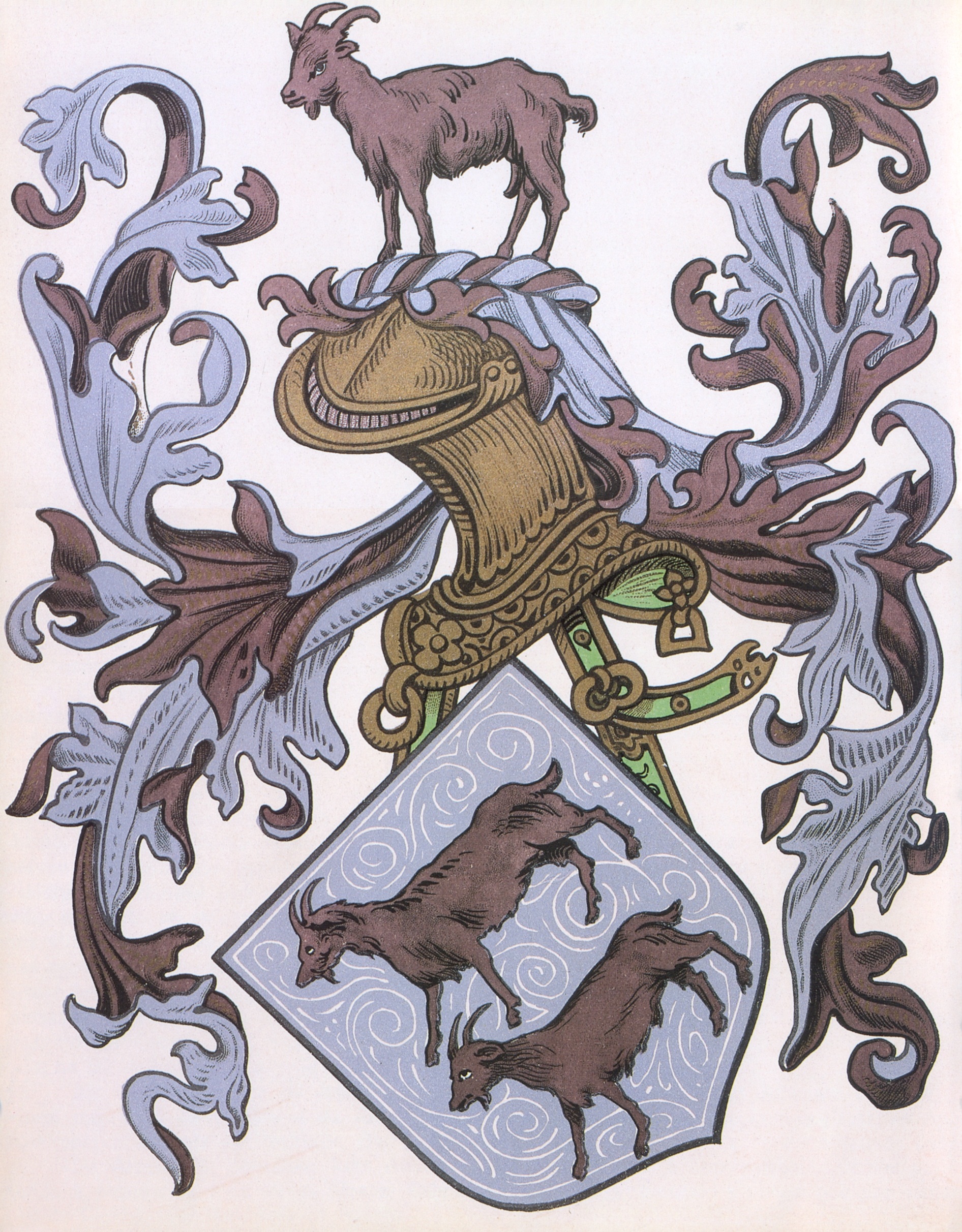|
1520 In Science
The year 1520 in science and technology included many events, some of which are listed here. Botany * Publication of ''Le Grant Herbier'' ("The Great Herbal") in Paris. Exploration * November 1–28 – Ferdinand Magellan's fleet makes the first passage of the Strait of Magellan and he names the Pacific Ocean. Births * ''approx. date'' – Vincenzo Galilei, Italian scientist and musician (died 1591) * Agatha Streicher, German physician (died 1581) Deaths * ''approx. date'' – Pedro Álvares Cabral, Portuguese explorer Exploration is the process of exploring, an activity which has some Expectation (epistemic), expectation of Discovery (observation), discovery. Organised exploration is largely a human activity, but exploratory activity is common to most organis ... (b. c. 1467/8). References {{reflist 16th century in science 1520s in science ... [...More Info...] [...Related Items...] OR: [Wikipedia] [Google] [Baidu] |
|
 |
Science
Science is a systematic discipline that builds and organises knowledge in the form of testable hypotheses and predictions about the universe. Modern science is typically divided into twoor threemajor branches: the natural sciences, which study the physical world, and the social sciences, which study individuals and societies. While referred to as the formal sciences, the study of logic, mathematics, and theoretical computer science are typically regarded as separate because they rely on deductive reasoning instead of the scientific method as their main methodology. Meanwhile, applied sciences are disciplines that use scientific knowledge for practical purposes, such as engineering and medicine. The history of science spans the majority of the historical record, with the earliest identifiable predecessors to modern science dating to the Bronze Age in Ancient Egypt, Egypt and Mesopotamia (). Their contributions to mathematics, astronomy, and medicine entered and shaped the Gree ... [...More Info...] [...Related Items...] OR: [Wikipedia] [Google] [Baidu] |
 |
Technology
Technology is the application of Conceptual model, conceptual knowledge to achieve practical goals, especially in a reproducible way. The word ''technology'' can also mean the products resulting from such efforts, including both tangible tools such as Kitchen utensil, utensils or machines, and intangible ones such as software. Technology plays a critical role in science, engineering, and everyday life. Technological advancements have led to significant changes in society. The earliest known technology is the stone tool, used during prehistory, followed by the control of fire—which in turn contributed to the Brain size, growth of the human brain and the development of language during the Pleistocene, Ice Age, according to the cooking hypothesis. The invention of the wheel in the Bronze Age allowed greater travel and the creation of more complex machines. More recent technological inventions, including the printing press, telephone, and the Internet, have lowered barriers to ... [...More Info...] [...Related Items...] OR: [Wikipedia] [Google] [Baidu] |
 |
Herbal
A herbal is a book containing the names and descriptions of plants, usually with information on their medicinal, Herbal tonic, tonic, culinary, toxic, hallucinatory, aromatic, or Magic (paranormal), magical powers, and the legends associated with them.Arber, p. 14. A herbal may also classify the plants it describes, may give recipes for Extract, herbal extracts, tinctures, or potions, and sometimes include mineral and animal medicaments in addition to those obtained from plants. Herbals were often illustrated to assist plant identification.Anderson, p. 2. Herbals were among the first literature produced in Ancient Egypt, China, India, and Europe as the medical wisdom of the day accumulated by Herbalism, herbalists, apothecary, apothecaries and physicians. Herbals were also among the first books to be printed in both China and Europe. In Western Europe herbals flourished for two centuries following the introduction of moveable type (c. 1470–1670). In the late 17th century, t ... [...More Info...] [...Related Items...] OR: [Wikipedia] [Google] [Baidu] |
 |
Ferdinand Magellan
Ferdinand Magellan ( – 27 April 1521) was a Portuguese explorer best known for having planned and led the 1519–22 Spanish expedition to the East Indies. During this expedition, he also discovered the Strait of Magellan, allowing his fleet to pass from the Atlantic into the Pacific Ocean and perform the first European navigation to Asia via the Pacific. Magellan was killed in battle in the Philippines and his crew, commanded by the Spanish Juan Sebastián Elcano, completed the return trip to Spain in 1522 achieving the first circumnavigation of Earth in history. Born around 1480 into a family of minor Portuguese nobility, Magellan became a skilled sailor and naval officer in service of the Portuguese Crown in Asia. King Manuel I refused to support Magellan's plan to reach the Moluccas, or Spice Islands, by sailing westwards around the American continent. Magellan then proposed the same plan to King Charles I of Spain, who approved it. In Seville, he married, fathere ... [...More Info...] [...Related Items...] OR: [Wikipedia] [Google] [Baidu] |
 |
Strait Of Magellan
The Strait of Magellan (), also called the Straits of Magellan, is a navigable sea route in southern Chile separating mainland South America to the north and the Tierra del Fuego archipelago to the south. Considered the most important natural passage between the Atlantic and Pacific oceans, the strait is approximately long and wide at its narrowest point. In 1520, the Spanish expedition of the Portuguese navigator Ferdinand Magellan, after whom the strait is named, became the first Europeans to discover it. Magellan's original name for the strait was ''Estrecho de Todos los Santos'' ("Strait of All Saints"). The King of Spain, Emperor Charles V, who sponsored the Magellan-Elcano expedition, changed the name to the Strait of Magellan in honor of Magellan. The route is difficult to navigate due to frequent narrows and unpredictable winds and currents. Maritime piloting is now compulsory. The strait is shorter and more sheltered than the Drake Passage, the often storm ... [...More Info...] [...Related Items...] OR: [Wikipedia] [Google] [Baidu] |
|
Vincenzo Galilei
Vincenzo Galilei (3 April 1520 – 2 July 1591) was an Italian lutenist, composer, and music theory, music theorist. His children included the astronomer and physicist Galileo Galilei and the lute virtuoso and composer Michelagnolo Galilei. Vincenzo was a figure in the musical life of the late Renaissance and contributed significantly to the musical revolution that demarcates the beginning of the Baroque music, Baroque era. In his study of pitch and string tension, Galilei produced perhaps the first non-linear mathematical description of a natural phenomenon known to history. Some credit him with directing the activity of his son away from pure, abstract mathematics and towards experimentation using mathematical quantitative description of the results, a direction of importance for the history of physics and natural science. Biography He was born in 1520 in Santa Maria a Monte, near Pisa, Republic of Florence, and began studying the lute at an early age. His mother was from San ... [...More Info...] [...Related Items...] OR: [Wikipedia] [Google] [Baidu] |
|
|
1591 In Science
The year 1591 in science and technology included many events, some of which are listed here. Mathematics * François Viète publishes ''In Artem Analyticien Isagoge'', introducing the new algebra with innovative use of letters as parameters in equations. * Giordano Bruno publishes and in Francfort. Technology * The Rialto Bridge in Venice, designed by Antonio da Ponte, is completed. Publications * Prospero Alpini publishes ''De Medicina Egyptiorum'' in Venice, including accounts of coffee, bananas and the baobab. * Publication of the first of the Conimbricenses commentaries on Aristotle by the Jesuits of the University of Coimbra, ''Commentarii Collegii Conimbricensis Societatis Jesu in octo libros physicorum Aristotelis Stagyritæ'', on Aristotle's ''Physics''. Births * February 21 – Gérard Desargues, French geometer (died 1661) Deaths * July 2 – Vincenzo Galilei, Italian scientist and musician (born 1520 Year 1520 ( MDXX) was a leap year starting on Sunday ... [...More Info...] [...Related Items...] OR: [Wikipedia] [Google] [Baidu] |
|
|
Agatha Streicher
Agatha Streicher (1520–1581), was a German physician who lived her entire life in Ulm. She has been referred to as the first female physician in Germany. Streicher was prohibited from studying medicine at the University because she was a woman. However, she studied medicine privately, likely from her brother Hans Augustin, who was a medical doctor. She was acknowledged to have sufficient knowledge to practice medicine in her hometown of Ulm and on 15 March 1561, Streicher was allowed to take the Hippocratic Oath, which had been binding since 1533. In this way, she was appointed as a "non-academic doctor in Ulm and was allowed to do medicine in private practice." Her reputation spread far and wide and many personalities came to Ulm for treatment, such as the Princess of Hohenzollern and the Bishop of Speyer. She was particularly known for her remedy for bladder stones that she produced herself. In 1576, she was even called to Regensburg to the bedside of Maximilian II, Holy Roma ... [...More Info...] [...Related Items...] OR: [Wikipedia] [Google] [Baidu] |
|
|
1581 In Science
The year 1581 in science and technology included the following notable events. Geophysics * Robert Norman publishes his observations of magnetic dip in The Newe Attractive' (London). Medicine * Roderigo Lopez becomes the physician-in-chief to Queen Elizabeth I of England until his death by execution, having been found guilty of plotting to poison her. Births * October 9 – Claude Gaspard Bachet de Méziriac, French mathematician (died 1638) * Edmund Gunter, English mathematician (died 1626). * ''approximate'' – Gaspare Aselli, Italian anatomist (died 1626). Deaths * Agatha Streicher, German physician (born 1520 Year 1520 ( MDXX) was a leap year starting on Sunday of the Julian calendar. Events January–March *January 19 – King Christian II of Denmark and Norway defeats the Swedes, at Lake Åsunden in Sweden. The Swedish regent St ...). References {{reflist 1581 16th century in science 1580s in science ... [...More Info...] [...Related Items...] OR: [Wikipedia] [Google] [Baidu] |
|
 |
Pedro Álvares Cabral
Pedro Álvares Cabral (; born Pedro Álvares de Gouveia; ) was a Portuguese nobleman, military commander, navigator and explorer regarded as the European discoverer of Brazil. He was the first human in history to ever be on four continents, uniting all of them in his famous voyage of 1500, where he also conducted the first substantial exploration of the northeast coast of South America and claimed it for Portugal. While details of Cabral's early life remain unclear, it is known that he came from a minor noble family and received a good education. He was appointed to head an expedition to India in 1500, following Vasco da Gama's newly opened route around Africa. The undertaking had the aim of returning with valuable spices and of establishing trade relations in India—bypassing the monopoly on the spice trade then in the hands of Arab, Turkish and Italian merchants. Although the previous expedition of Vasco da Gama to India, on its sea route, had recorded signs of land west o ... [...More Info...] [...Related Items...] OR: [Wikipedia] [Google] [Baidu] |
|
Portugal
Portugal, officially the Portuguese Republic, is a country on the Iberian Peninsula in Southwestern Europe. Featuring Cabo da Roca, the westernmost point in continental Europe, Portugal borders Spain to its north and east, with which it shares Portugal-Spain border, the longest uninterrupted border in the European Union; to the south and the west is the North Atlantic Ocean; and to the west and southwest lie the Macaronesia, Macaronesian archipelagos of the Azores and Madeira, which are the two Autonomous Regions of Portugal, autonomous regions of Portugal. Lisbon is the Capital city, capital and List of largest cities in Portugal, largest city, followed by Porto, which is the only other Metropolitan areas in Portugal, metropolitan area. The western Iberian Peninsula has been continuously inhabited since Prehistoric Iberia, prehistoric times, with the earliest signs of Human settlement, settlement dating to 5500 BC. Celts, Celtic and List of the Pre-Roman peoples of the Iberia ... [...More Info...] [...Related Items...] OR: [Wikipedia] [Google] [Baidu] |